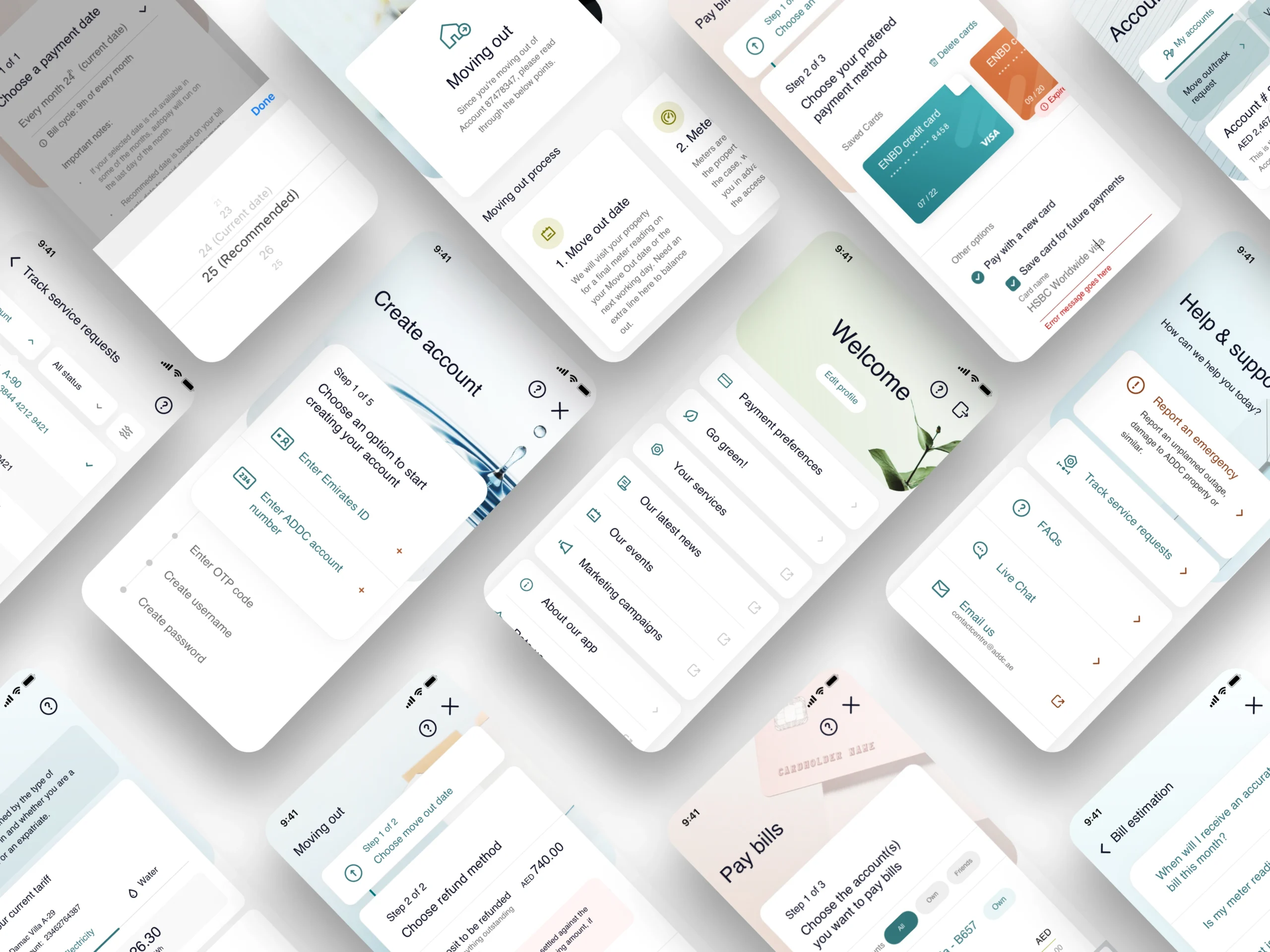Project Overview
Abu Dhabi Distribution Company (ADDC), a key utility provider in the UAE capital, sought to redesign its consumer mobile application to better serve residents managing their Electricity and Water services. The app allows users to perform essential tasks like bill payments, move-in/move-out requests, tracking consumption, managing multiple properties, and requesting refunds.
The existing application had become outdated, with users reporting friction in navigation, difficulty finding key features, and a lack of clarity around service status updates. The objective of this redesign was to deliver a modern, intuitive, and responsive experience that simplifies everyday utility tasks, encourages self-service, and improves transparency around service status and consumption.
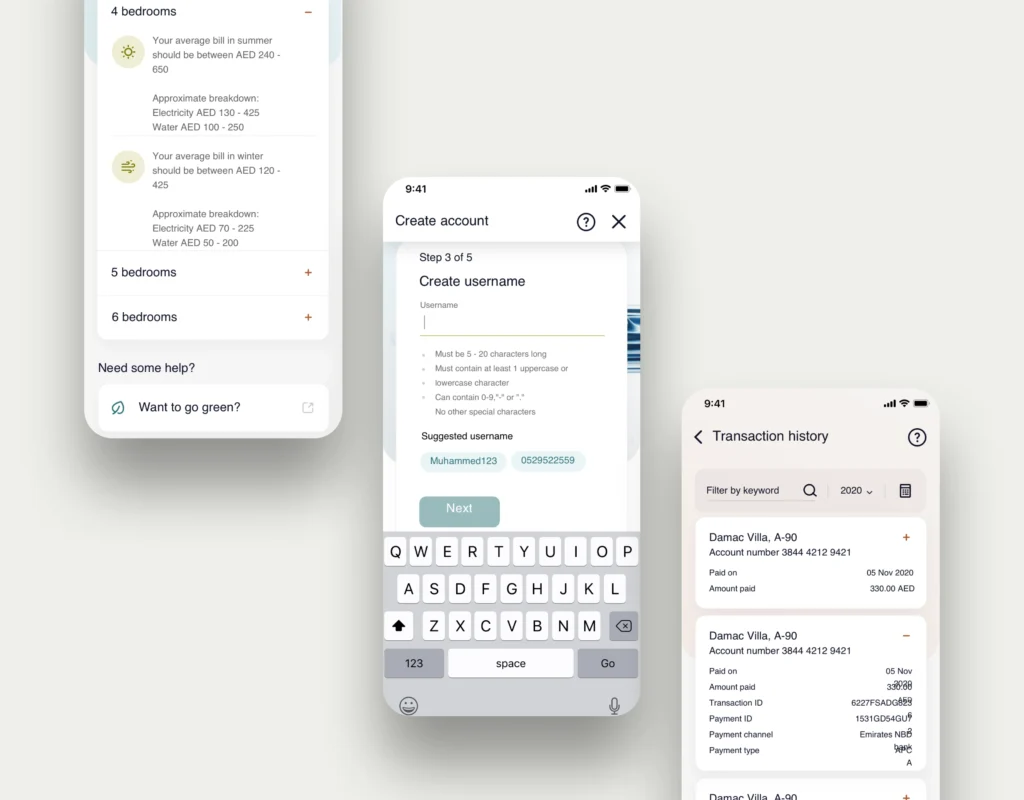
My Role & Contribution
As the UX Designer assigned to the project, I worked in close collaboration with the internal product team, business analysts, and design leads to completely rethink the user experience. My focus was to align user needs with stakeholder goals through structured research, design strategy, and iterative testing.
- Conducted a comprehensive UX audit of the existing application, identifying core friction points in billing, service requests, and property management.
- Collaborated with the business team to document user personas and build a clear understanding of varying user roles (e.g., tenants vs. owners, single vs. multi-property users).
- Reviewed support tickets and customer service logs to surface common user complaints and confusion points.
- Designed and facilitated remote usability testing sessions with real ADDC customers across different demographics and tech literacy levels.
- Captured critical insights on how users interacted with features like refund tracking, consumption tips, and status monitoring for move-in/move-out services.
- Identified gaps in awareness and feature discoverability—many users were unaware of the support and self-service options available to them.
- Proposed a modular IA (Information Architecture) that prioritized high-frequency actions such as “Pay Bills”, “Track Requests”, and “View Usage”.
- Created low- to mid-fidelity wireframes to iterate on key flows; Multi-property account management, Refund initiation and status, Move-in/out request tracking, Accessing tips and support resources.
- Designed user journeys that anticipated real-life pain points—like the need to manage services while between properties or on the go.
- Led stakeholder co-creation sessions to validate design direction and clarify priorities—balancing regulatory needs with usability best practices.
- Shared prototypes and visual walkthroughs with internal business units and the customer service team for real-time feedback.
- Collaborated with UI designers to translate the improved user experience into a visually engaging, accessible interface that adhered to ADDC’s branding guidelines.
- Ensured the final UI components supported Arabic and English language flows, responsive design patterns, and inclusive accessibility principles.
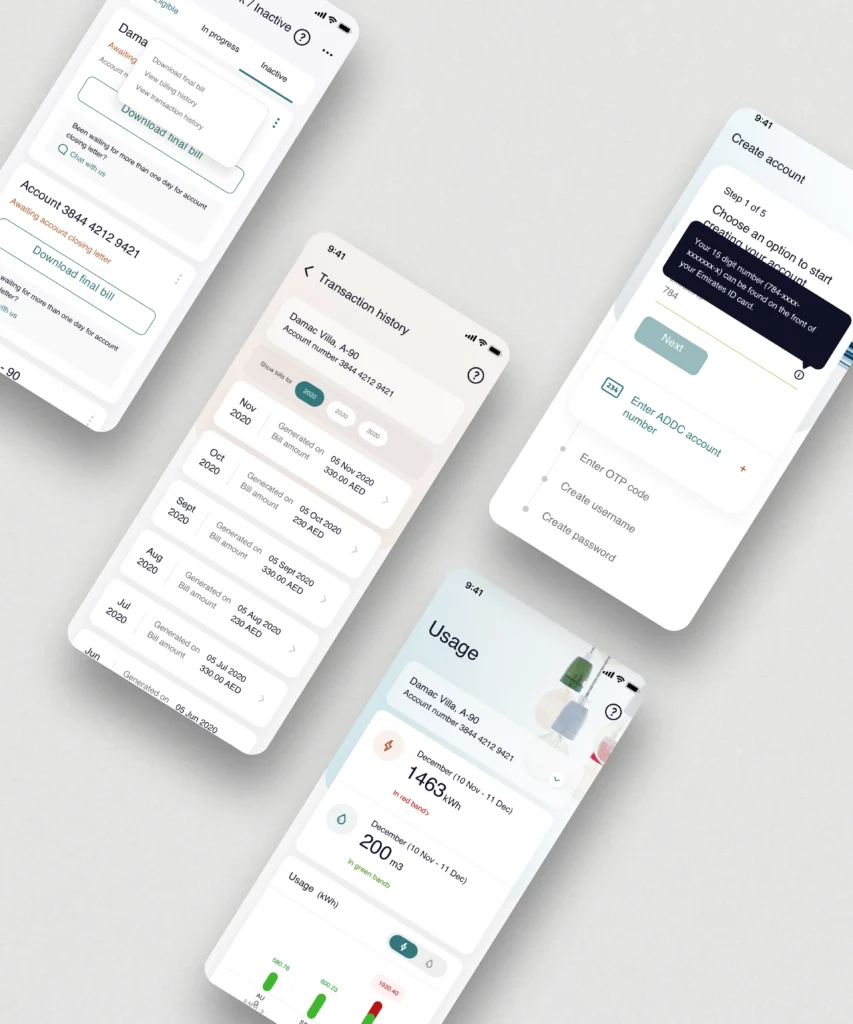
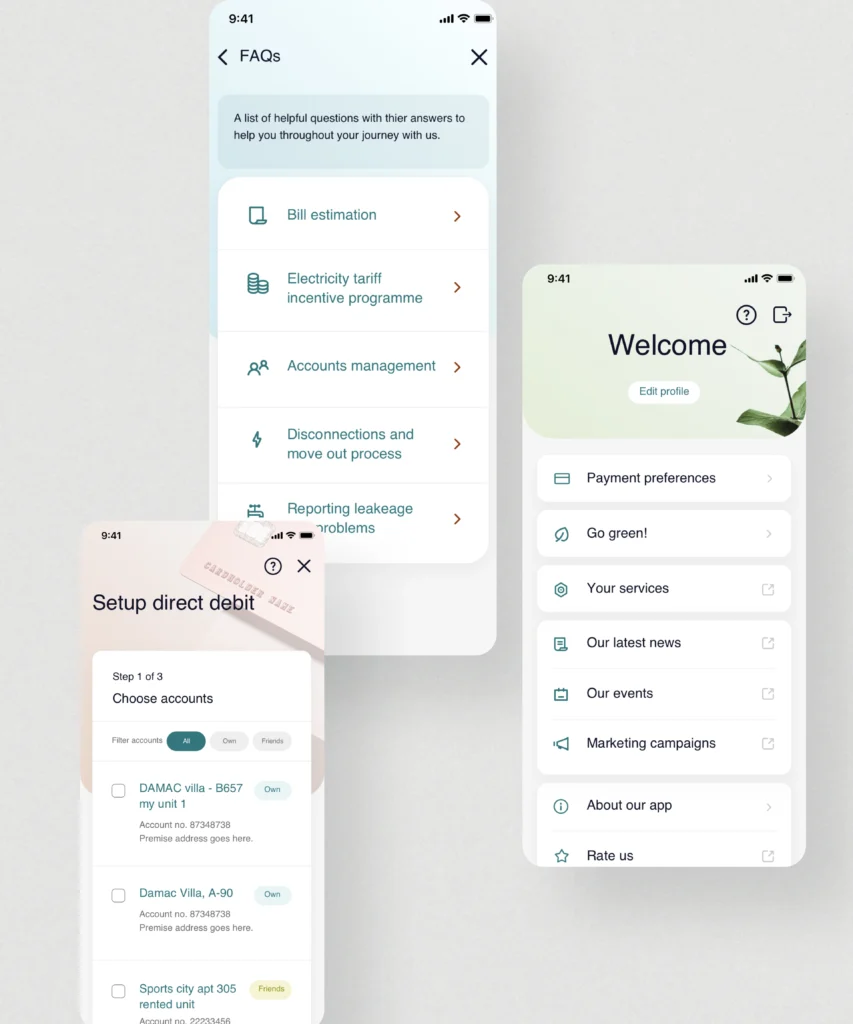
Impact & Outcome
- The redesigned app enhanced feature discoverability and reduced user confusion around request tracking and account management.
- Users reported a noticeable improvement in navigation clarity and task completion speed, especially during payment and service request workflows.
- The support and tips section saw increased engagement, helping drive more informed consumption behavior.
- Stakeholders praised the research-driven, user-first approach and adopted several UX recommendations into their long-term product roadmap.
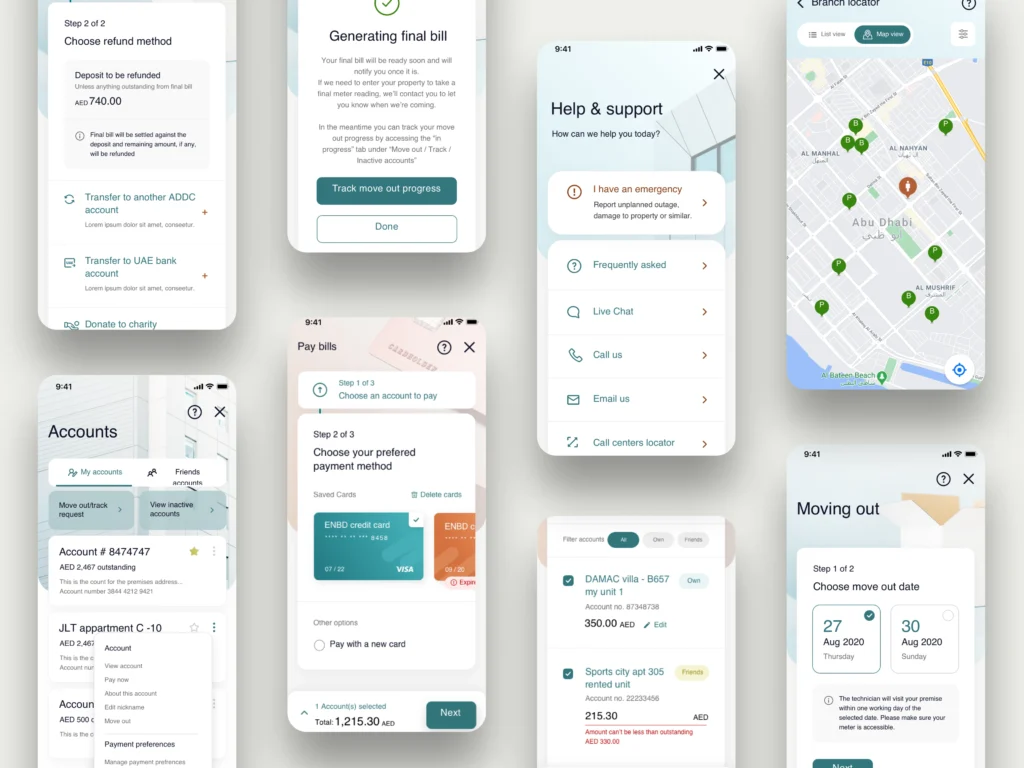
Reflection
This project was a powerful demonstration of how structured UX research and empathy-driven design can transform a high-utility service into an empowering digital experience. Working on the ADDC app allowed me to bridge user needs with system complexity—designing for real impact in a sector that touches every resident’s daily life.
